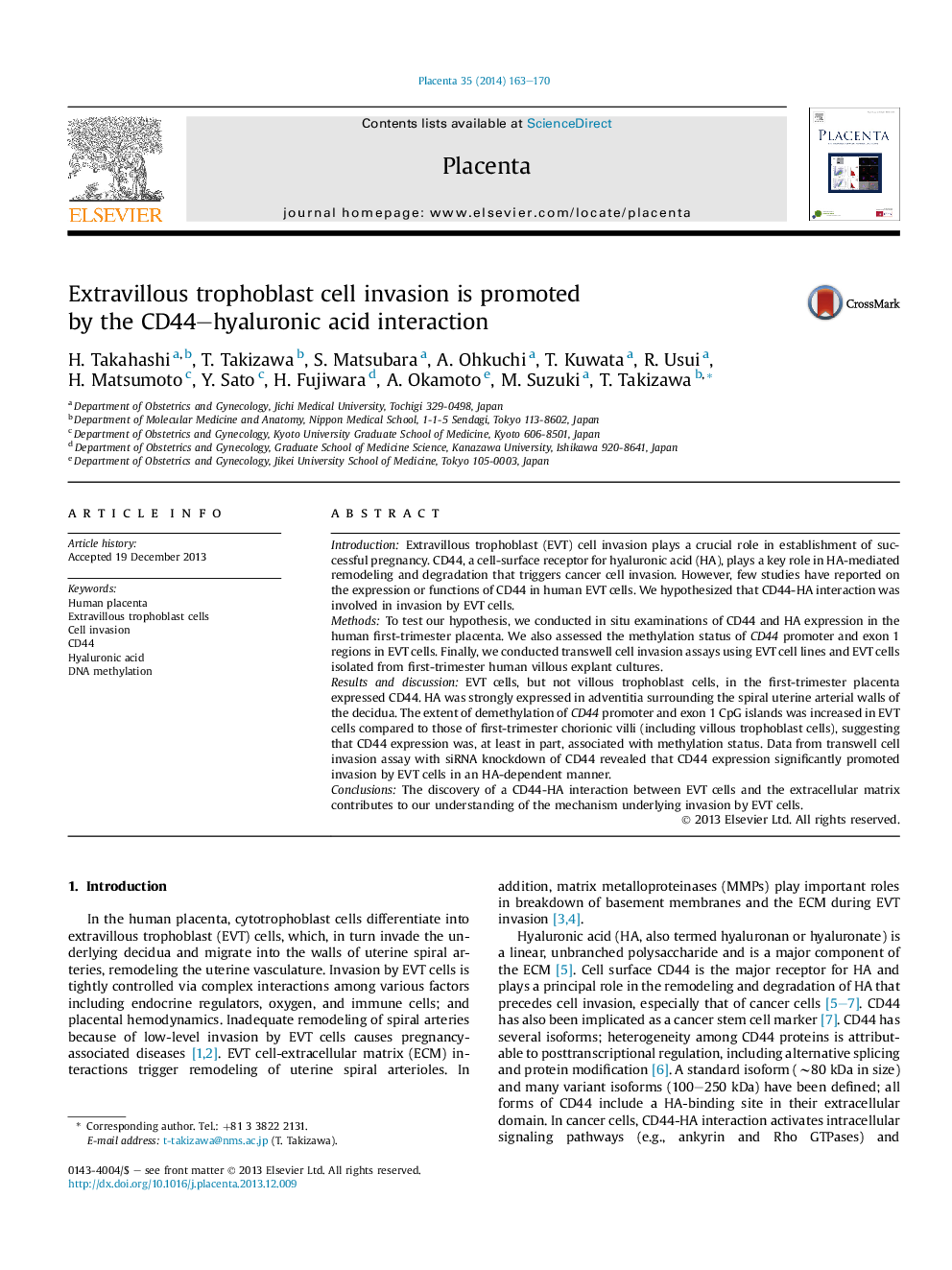| Article ID | Journal | Published Year | Pages | File Type |
|---|---|---|---|---|
| 2788782 | Placenta | 2014 | 8 Pages |
IntroductionExtravillous trophoblast (EVT) cell invasion plays a crucial role in establishment of successful pregnancy. CD44, a cell-surface receptor for hyaluronic acid (HA), plays a key role in HA-mediated remodeling and degradation that triggers cancer cell invasion. However, few studies have reported on the expression or functions of CD44 in human EVT cells. We hypothesized that CD44-HA interaction was involved in invasion by EVT cells.MethodsTo test our hypothesis, we conducted in situ examinations of CD44 and HA expression in the human first-trimester placenta. We also assessed the methylation status of CD44 promoter and exon 1 regions in EVT cells. Finally, we conducted transwell cell invasion assays using EVT cell lines and EVT cells isolated from first-trimester human villous explant cultures.Results and discussionEVT cells, but not villous trophoblast cells, in the first-trimester placenta expressed CD44. HA was strongly expressed in adventitia surrounding the spiral uterine arterial walls of the decidua. The extent of demethylation of CD44 promoter and exon 1 CpG islands was increased in EVT cells compared to those of first-trimester chorionic villi (including villous trophoblast cells), suggesting that CD44 expression was, at least in part, associated with methylation status. Data from transwell cell invasion assay with siRNA knockdown of CD44 revealed that CD44 expression significantly promoted invasion by EVT cells in an HA-dependent manner.ConclusionsThe discovery of a CD44-HA interaction between EVT cells and the extracellular matrix contributes to our understanding of the mechanism underlying invasion by EVT cells.
